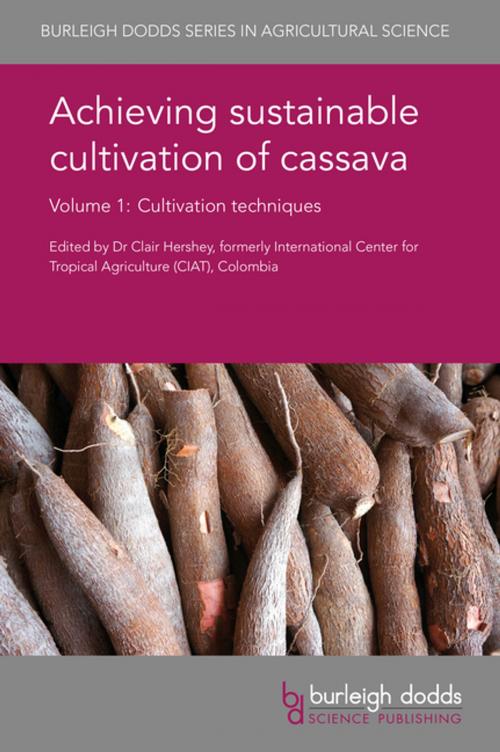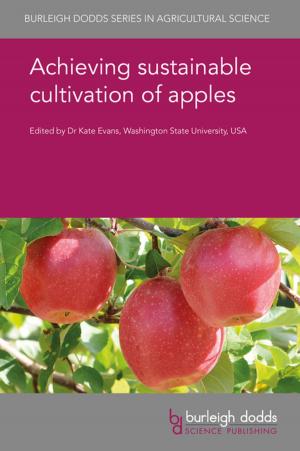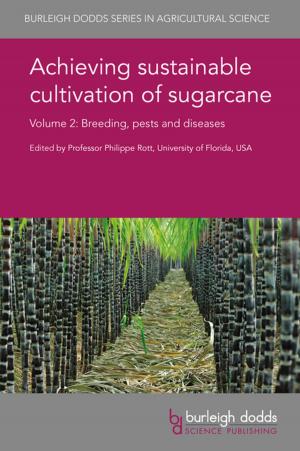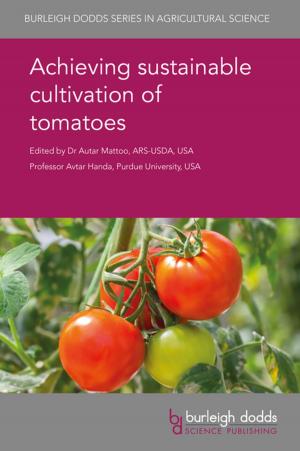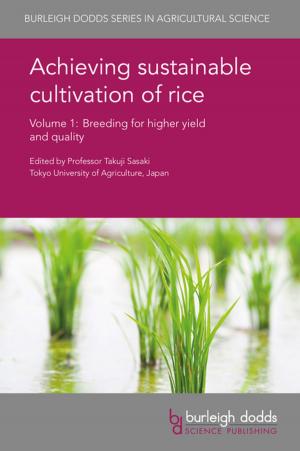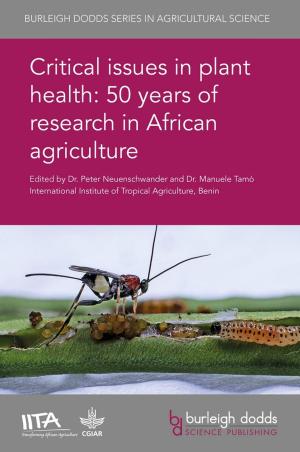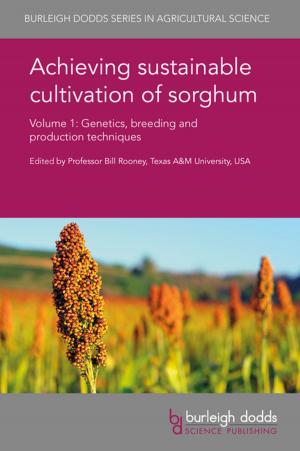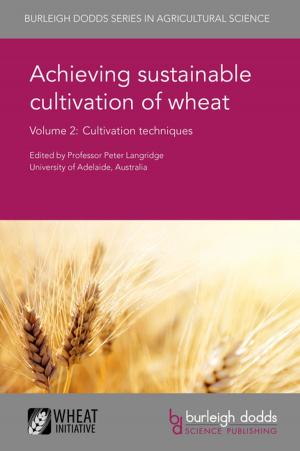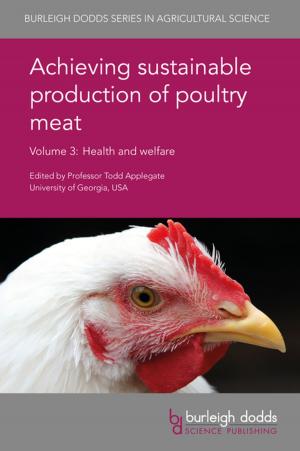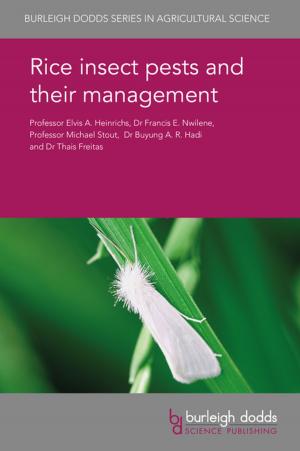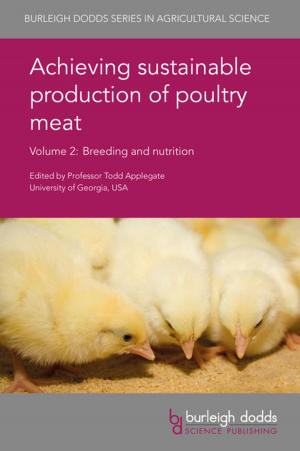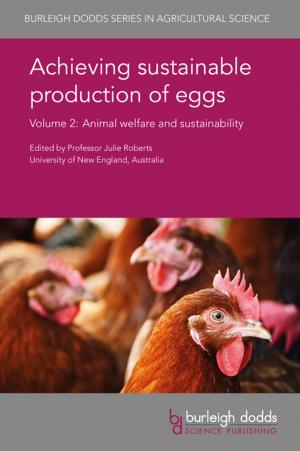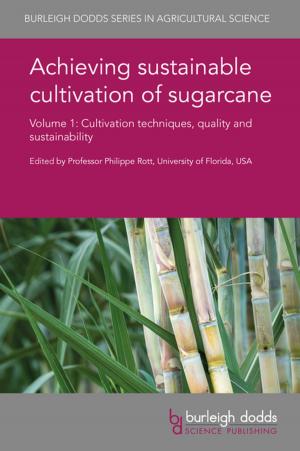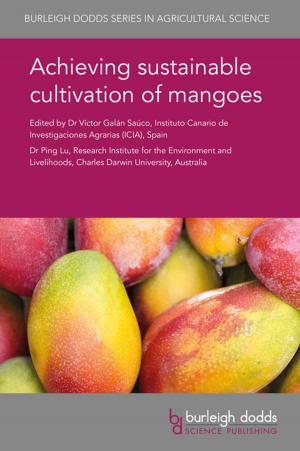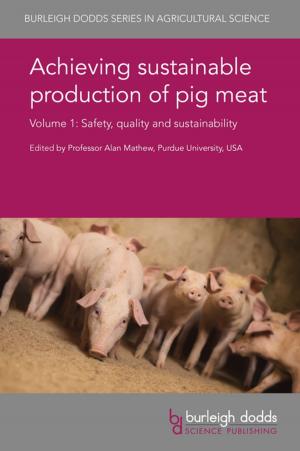Achieving sustainable cultivation of cassava Volume 1
Cultivation techniques
Nonfiction, Science & Nature, Technology, Agriculture & Animal Husbandry, Science| Author: | Prof. Doyle McKey, Marc Delêtre, Dr Aurélie Bechoff, Kuakoon Piyachomkwan, Sittichoke Wanlapatit, Prof. Klanarong Sriroth, Dr Keith Tomlins, Ben Bennett, Dr Tin Maung Aye, Dr Dunstan S. C. Spencer, Chuma Ezedinma, Olivier F. Vilpoux, Denilson de Oliveira Guilherme, Prof. Marney Pascoli Cereda, Dr Clair H. Hershey, Dr Kolawole Adebayo, Dr Claude M. Fauquet, Joe Tohme, Dr Reinhardt Howeler, Dr James George, Sarojini Amma Sunitha, Dr Thomas W. Kuyper, Prof. Samuel Adjei-Nsiah, Mr George Marechera, Grace Muinga | ISBN: | 9781786760029 |
| Publisher: | Burleigh Dodds Science Publishing | Publication: | July 31, 2017 |
| Imprint: | Burleigh Dodds Science Publishing | Language: | English |
| Author: | Prof. Doyle McKey, Marc Delêtre, Dr Aurélie Bechoff, Kuakoon Piyachomkwan, Sittichoke Wanlapatit, Prof. Klanarong Sriroth, Dr Keith Tomlins, Ben Bennett, Dr Tin Maung Aye, Dr Dunstan S. C. Spencer, Chuma Ezedinma, Olivier F. Vilpoux, Denilson de Oliveira Guilherme, Prof. Marney Pascoli Cereda, Dr Clair H. Hershey, Dr Kolawole Adebayo, Dr Claude M. Fauquet, Joe Tohme, Dr Reinhardt Howeler, Dr James George, Sarojini Amma Sunitha, Dr Thomas W. Kuyper, Prof. Samuel Adjei-Nsiah, Mr George Marechera, Grace Muinga |
| ISBN: | 9781786760029 |
| Publisher: | Burleigh Dodds Science Publishing |
| Publication: | July 31, 2017 |
| Imprint: | Burleigh Dodds Science Publishing |
| Language: | English |
Originating in South America, cassava is now grown in over 100 countries around the world. It is the third most important source of calories in the tropics after rice and maize. Its caloric value, as well as its ability to tolerate dry conditions and poor soils, makes it a key food security crop in developing countries, particularly in Africa. As demand for food grows, there is an urgent need to increase yields in the face of such challenges as climate change, threats from pests and diseases and the need to make cultivation more resource-efficient and sustainable.
Drawing on an international range of expertise, this collection focuses on ways of improving the cultivation of cassava at each step in the value chain, from breeding to post-harvest storage. Volume 1 starts by reviewing current issues facing cassava cultivation around the world before discussing methods for sustainable intensification such as rotations, intercropping and more efficient nutrient management.
Achieving sustainable cultivation of cassava Volume 1: Cultivation techniques will be a standard reference for agricultural scientists in universities, government and other research centres and companies involved in improving cassava cultivation. It is accompanied by Volume 2 which reviews breeding, pests and diseases.
Originating in South America, cassava is now grown in over 100 countries around the world. It is the third most important source of calories in the tropics after rice and maize. Its caloric value, as well as its ability to tolerate dry conditions and poor soils, makes it a key food security crop in developing countries, particularly in Africa. As demand for food grows, there is an urgent need to increase yields in the face of such challenges as climate change, threats from pests and diseases and the need to make cultivation more resource-efficient and sustainable.
Drawing on an international range of expertise, this collection focuses on ways of improving the cultivation of cassava at each step in the value chain, from breeding to post-harvest storage. Volume 1 starts by reviewing current issues facing cassava cultivation around the world before discussing methods for sustainable intensification such as rotations, intercropping and more efficient nutrient management.
Achieving sustainable cultivation of cassava Volume 1: Cultivation techniques will be a standard reference for agricultural scientists in universities, government and other research centres and companies involved in improving cassava cultivation. It is accompanied by Volume 2 which reviews breeding, pests and diseases.
